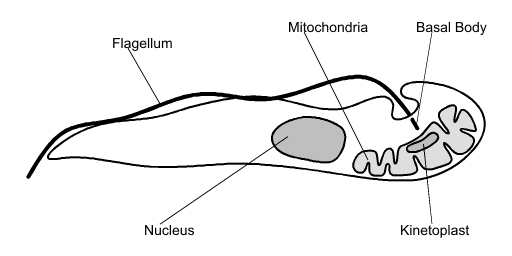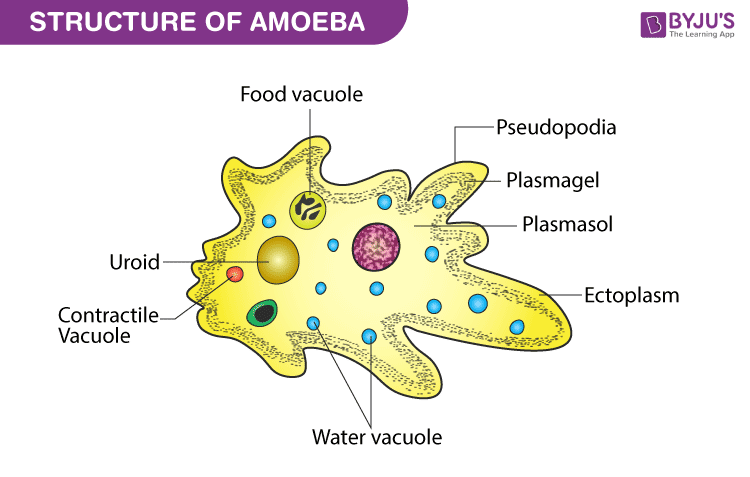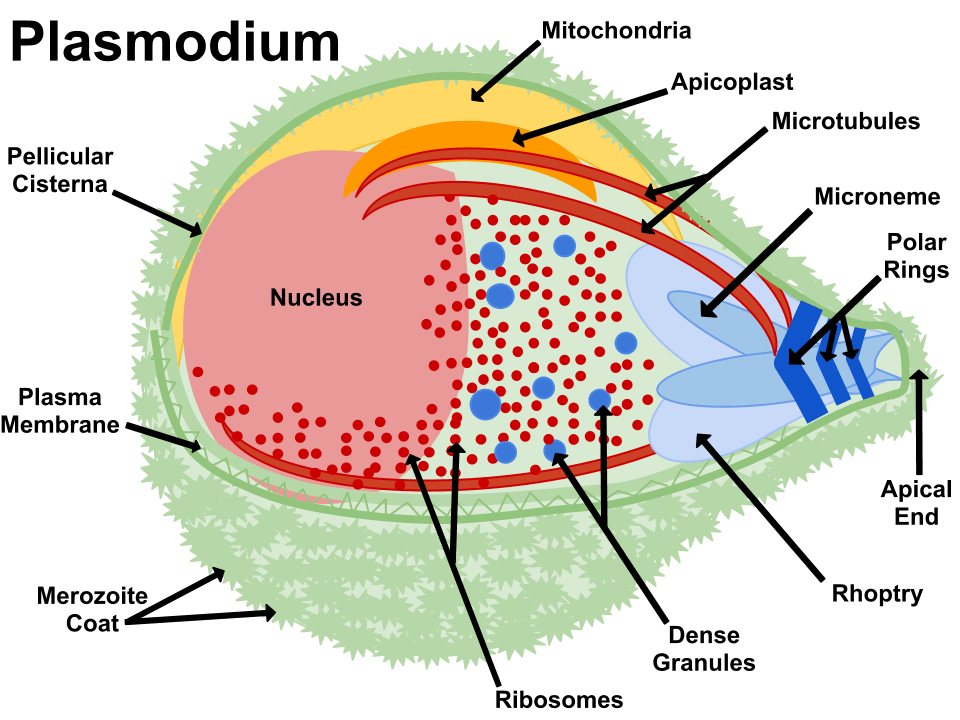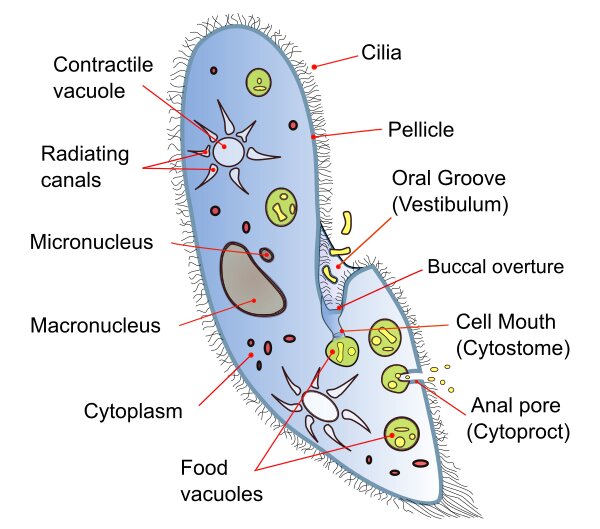What is Protozoa?
Protozoa are unicellular, eukaryotic, heterotrophic organisms. They are either free-living or parasites. There are around 65000 species of protozoans categorised in different groups. They lack a cell wall. There are many different cell organelles, that perform various tasks performed by different organs in higher animals, e.g. mouth, anus, intestinal tract, etc.
Download Complete Chapter Notes of Biological Classification
Download Now
There are many protozoa, that cause various diseases in animals and humans, e.g. Plasmodium (malarial parasite), Trypanosoma (sleeping sickness), Trichomonas (trichomoniasis), etc.
The protozoa have many stages in their life cycle. Some of the stages of the life cycle are infectious.
The cyst stage is dormant and resistant to environmental stress, the trophozoite stage is reproductive and causes disease.
Table of Content
- General Characteristics of Protozoa
- Protozoa Classification and Examples
- Examples of Diseases caused by Protozoa
- Protozoan Diseases in Humans
General Characteristics of Protozoa
Habitat- Protozoa are found in the aquatic environment. They live in freshwater or oceans. Some are free-living and some are parasitic in plants and animals. Mostly they are aerobic but some are anaerobic and present in the rumen or human intestine.
Some of the species are found in extreme environments like hot springs. Some of them form resting cyst to overcome dry environments.
Size and Shape- The size and shape of Protozoa vary greatly, from microbial (1µm) to large enough and can be seen by the naked eye. The shell of unicellular foraminifera can have a diameter of 20 cm.
They lack a rigid cell wall, so they are flexible and found in various shapes. Cells are enclosed in a thin plasma membrane. Some of the species have a hard shell on the outer surface. In some of the protozoans especially in ciliates, the cell is supported by Pellicle, which may be flexible or rigid and give organisms the definite shape and help in locomotion.
| Don’t miss: NEET Answer Key |
Cellular Structure- They are unicellular having a eukaryotic cell. The metabolic functions are performed by some specialised internal structures.
- They mostly have one membrane-bound nucleus in the cell
- The nucleus has diffused appearance due to scattered chromatin, the vesicular nucleus contains a central body called endosome or nucleoli. Nucleoli of apicomplexans have DNA, whereas amoeboids lack DNA in their endosome
- Ciliates have micronucleus and macronucleus
- The plasma membrane encloses the cytoplasm and other locomotory projections like flagella, pseudopodia and cilia
- Some of the genera have a membranous envelope called pellicle, which gives a definite shape to the cell. In some of the protozoans, epibiotic bacteria attach to the pellicle by their fimbriae
- The cytoplasm is differentiated into outer ectoplasm and inner endoplasm, ectoplasm is transparent and endoplasm contains cell organelles
- Some of the protozoa have cytostome for ingesting food. Food vacuoles are present, where ingested food comes. Ciliates have a gullet, a body cavity which opens outside
- The central vacuole is present for osmoregulation, that removes excess water
- Membrane-bound cell organelles, like mitochondria, Golgi bodies, lysosomes and other specialised structures are present
Nutrition- Protozoa are heterotrophic and have holozoic nutrition. They ingest their food by phagocytosis. Some of the protozoan groups have a specialised structure called cytostome for phagocytosis.
The pseudopodia of amoeboids help in catching the prey. Thousands of cilia present in ciliates drive the food-laden water into the gullet.
The ingested food comes to the food vacuole and gets acted on by lysosomal enzymes. The digested food gets distributed throughout the cell.
Locomotion- Most of the protozoa species have flagella, cilia or pseudopodia. Sporozoa, which don’t have any locomotory structure, have subpellicular microtubules, which help in the slow movement.
Life Cycle- The life cycle of most of the protozoa alternates between dormant cyst stage and proliferating vegetative stage, e.g. trophozoites.
The cyst stage can survive harsh conditions without water and nutrients. It can remain outside the host for a longer duration and get transmitted.
The trophozoite stage is infectious, and they feed and multiply during this stage.
Reproduction- Mostly they reproduce by asexual means. They multiply by binary fission, longitudinal fission, transverse fission or budding.
In some of the species, sexual reproduction is present. The sexual reproduction is by conjugation, syngamy or by gametocytes formation.
Also see:
Protozoa Classification and Examples
Protozoa is a phylum having unicellular heterotrophs. It comes under Kingdom Protista.
Protozoa are divided into four major groups based on the structure and the part involved in the locomotion:
1. Mastigophora or Flagellated protozoans:
They are parasites or free-living.
- They have flagella for locomotion
- Their body is covered by a cuticle or pellicle
- Freshwater forms have a contractile vacuole
- Reproduction is by binary fission (longitudinal division)
- Examples: Trypanosoma, Trichomonas, Giardia, Leishmania, etc.

2. Sarcodina or Amoeboids:
They live in the freshwater, sea or moist soil.
- The movement is by pseudopodia. They capture their prey by pseudopodia
- There is no definite shape and pellicle is absent
- The contractile vacuole is present in the amoeboids living in freshwater
- Reproduction is by binary fission and cyst formation
- Examples: Amoeba, Entamoeba, etc.

3. Sporozoa or Sporozoans:
They are endoparasitic.
- They don’t have any specialised organ for locomotion
- The pellicle is present, which has subpellicular microtubules, that help in movement
- Reproduction is by sporozoite formation
- Examples: Plasmodium, Myxidium, Nosema, Globidium, etc.

4. Ciliophora or Ciliated protozoans:
They are aquatic and move actively with the help of thousands of cilia.
- They have fixed shape due to covering of pellicle
- They may have tentacles, e.g. in the sub-class Suctoria
- Contractile vacuoles are present
- Some species have an organ for defence called trichocysts
- They move with the help of cilia and the movement of cilia also helps in taking food inside the gullet
- They reproduce by transverse division and also form cysts
- Examples: Paramecium, Vorticella, Balantidium, etc.

Examples of Diseases caused by Protozoa
Many of the protozoans are parasites and are disease causing pathogens. Find below the common diseases caused by protozoans.
| List of diseases caused by protozoans | ||||
| Name of the Disease | Causal organism | Vector | Pathogenesis | Disease symptoms |
| Malaria | Plasmodium falciparum, P. vivax, P. malariae, P. ovale | Female Anopheles mosquito | The parasite attacks the liver and RBCs. It multiplies within liver cells, enters the bloodstream and ruptures RBCs. It releases a toxic substance called ‘hemozoin’, which causes fever. The sporozoite is the infectious stage | Fever, headache, vomiting, abdominal pain and it may lead to fatal conditions if not treated like organ failure and convulsions |
| Amoebiasis or Amoebic dysentery | Entamoeba histolytica | None. It gets transmitted by contaminated food or water | Invades intestinal mucosa and spreads to other parts like liver. Causes dysentery and liver abscesses.
The infected stage is trophozoites |
Abdominal pain, loose bowel movement, bloody stool, loss of appetite, nausea, fever |
| African Sleeping sickness or Trypanosomiasis | Trypanosoma brucei gambiense, T. brucei rhodesiense | Tsetse fly | B-lymphocyte proliferation leading to tissue damage | High fever, muscle and joint pain, irritability, swollen lymph nodes, skin rashes. If left untreated, neurological problems develop, which become fatal |
| Trichomoniasis | Trichomoniasis vaginalis | Sexually transmitted disease (STD) | Destroys epithelial cells and cytotoxic substances are released. Vaginal pH increases and the number of leukocytes also increases in response to the toxic substance released by the pathogen | Itching and burning in genital organs and discharge.
Mostly asymptomatic in males, but in females it may lead to many complications such as complication during pregnancy and after birth |
| Toxoplasmosis | Toxoplasma gondii | Transmission by contaminated water and soil or get attached to fur of animals | Sporozoites penetrate the intestinal cells and multiply in the intestine. It invades the lymphatic system and blood and damages the tissue leading to necrosis | Redness of eye, blurred vision, flu-like symptoms |
| Balantidiasis | Balantidium coli | Pigs | Excystation occurs in the small intestine. Sporozoites migrate to the colon | Ulcer due to lesion in the colon, colitis, blood and mucus in the stool, |
| Giardiasis | Giardia lamblia or duodenalis | None. It gets transmitted by contaminated food or water | Mucosal damage is related to the mucosal inflammation and release of lectin or proteinases. Malabsorption may also be due to inhibition of pancreatic enzymes and depletion of bile concentration | The parasite is present in the duodenum.
Watery or foul-smelling diarrhoea, nausea, flatulence, weight loss |
| Leishmaniasis or Kala-azar | Leishmania donovani | Female Sandflies (of the genus Phlebotomus) | The flagellated promastigotes of the parasite bind to macrophages present in the skin. There is marked suppression of cell-mediated immunity | Enlarged liver and spleen, fever, skin turns dark |
Protozoan Diseases in Humans
Most of the protest diseases in humans are attributed to protozoa. Protozoa induces sickness in humans when it turns into human parasites. A majority of the prevalent and fatal diseases are caused by protozoan infections in humans such as Malaria, amoebic dysentery and African Sleeping Sickness.
These are capable of multiplying in humans, contributing to their survival, enabling the development of dangerous infections from one entity only. The transmission of protozoa found in the intestine of humans to another human usually takes place via the fecal-oral path, such as, through contaminated water or food or person-to-person contact. Those protozoa found in the tissue or blood of humans are passed to other humans by an arthropod vector.
Also Explore: NEET Flashcard: Human Health and Disease
Diseases Caused by Bacteria
Any type of sickness caused by bacteria is a bacterial disease. These bacteria are known to cause diseases by excreting or secreting toxins by releasing toxins internally that gets released with the disintegration of the bacteria or by the induction of sensitivity to its antigenic attributes.
Examples
Some of the dangerous diseases which are caused by bacteria are bacterial meningitis, diphtheria, tetanus, cholera, syphilis, gonorrhoea, Tuberculosis, Bubonic plague and Lyme disease.
Diseases Caused by Fungi
Fungi are microbes, distinguished by chitin seen in their cell walls. Infections caused by fungi are referred to as mycosis. There are different fungi known to cause different types of diseases. These could be contagious, spreading from one to another person. They can also spread from contaminated surfaces or soil and even infected animals. Fungi usually reproduce by the release of spores. Since these spores can be picked by inhaling or direct contact, this infection usually affects nails, skin etc. It can get through the skin, affecting organs and can affect the whole organism.
Examples
A few diseases caused by fungi are –
- Ringworm
- Jock itch
- Athlete’s foot
- Aspergillosis
- Candidiasis
Frequently Asked Questions on Protozoa
Name any two diseases caused by Protozoa.
Two diseases caused by Protozoans are – Malaria and Toxoplasmosis. The causative of Malaria is a spore-forming protozoan -Plasmodium spp. and is distinguished by periodic attacks of fever. Toxoplasma gondii is the causative agent of toxoplasmosis, which is a spore-forming protozoan. Man can take up the infections from sheep, cats, dogs and other animals.

Comments